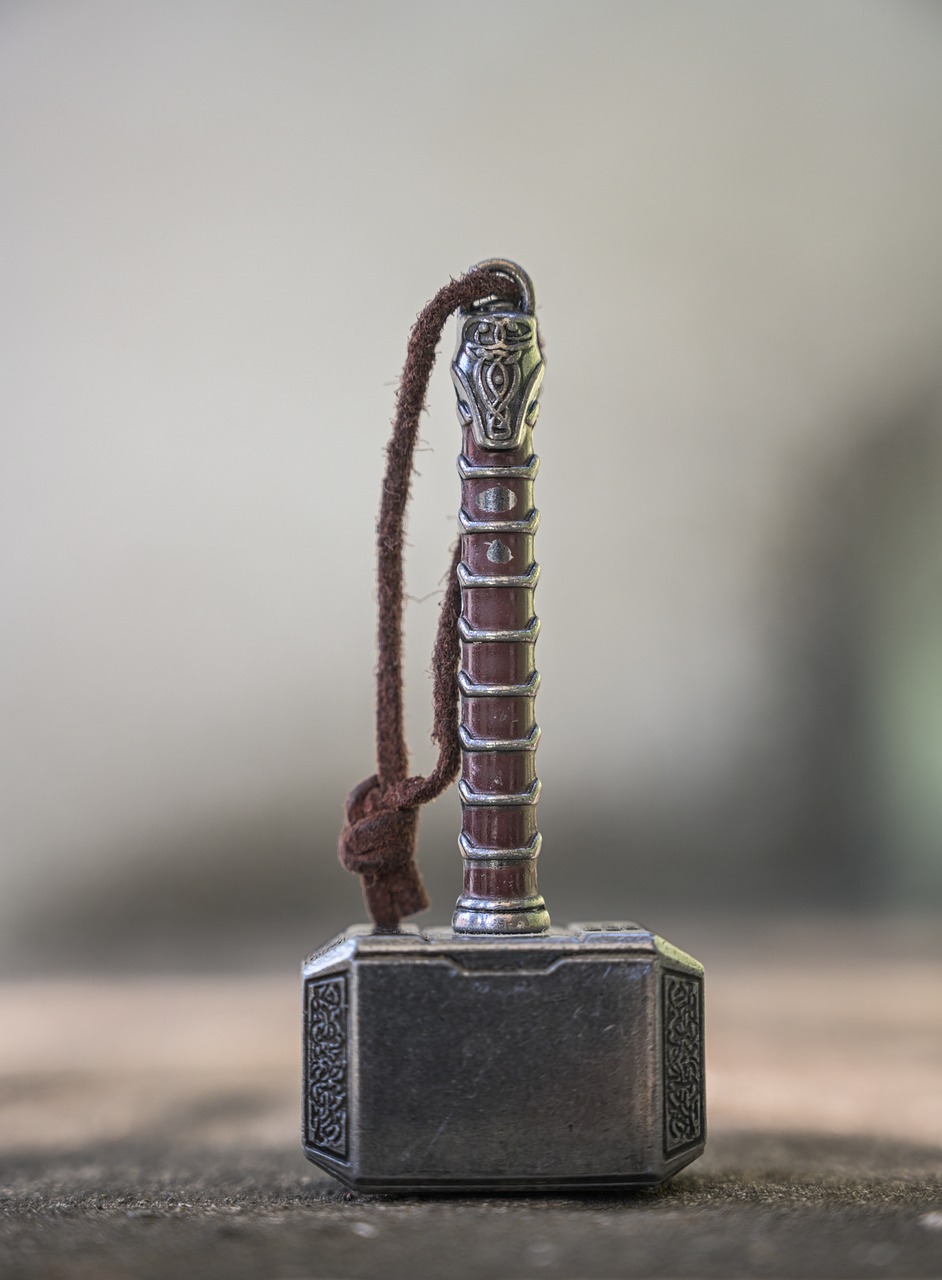The Significance of Thor’s Hammer in Norse Culture
Among the many potent symbols in Norse mythology, Thor’s Hammer—known in Old Norse as Mjöllnir—stands out as perhaps the most recognizable and historically significant. As the steadfast protector of Asgard, Thor was essential in warding off the chaos embodied by the giants who threatened the realm of the Aesir, the principal deities in Norse lore. Not merely a weapon, Mjöllnir played a crucial role in upholding the cosmic balance between order and chaos.
The Nature and Origins of Mjöllnir
Thor’s hammer was unique; when hurled, it would return to him much like a boomerang. The roots of Thor’s name are connected to thunder, reflecting his domain over storms and lightning. The etymology of Mjöllnir remains somewhat ambiguous; however, many scholars speculate that it stems from an Indo-European term linked to “lightning,” observed in several languages, indicating its deep cultural resonance.
This hammer represented not only destruction but also blessings and protection. It was a versatile tool used in rituals marking significant life events, such as marriages, births, and funerals. Notably, a tale recounted in the Prose Edda illustrates Thor using Mjöllnir to resurrect his slain goats, highlighting its sacred significance in enchanting acts.
Mjöllnir in Rites and Ceremonies
While primarily recognized as a weapon, Mjöllnir functioned as a vital instrument of consecration as well. Historical accounts demonstrate that it was employed in ceremonies intended to bless and safeguard communities. Historian Hilda Roderick Ellis Davidson notes that the powers of Thor extended across all aspects of societal life—from births and marriages to weapons and oaths. Without Mjöllnir, Asgard’s defense against chaos would falter.
Among the various ceremonies, those involving the hammer in marriage blessings are particularly documented. This practice is referenced in the tale commonly known as Thor as a Transvestite, wherein Thor, in disguise as a bride, sought his stolen hammer, capturing it during the wedding ceremony to subsequently defeat the giants.
Illustrations from the Bronze Age suggest the deep historical roots of using a hammer in sacred rites, as engravings feature figures being blessed by a larger entity wielding a hammer, which might echo Thor’s own divine role.
Archetypes of Cosmos and Chaos
The relationship between Mjöllnir and the broader Norse worldview is encapsulated in the contrast between the conceptual realms of cosmos and chaos—innangard and utangard, respectively. Asgard, where the gods resided, and Midgard—the realm of humanity—were sanctified spaces fortified against chaos, represented by the giants of Jotunheim.
The act of consecrating life events with Thor’s hammer was believed to elevate and sanctify them, ensuring the protected integration of those aspects into the ordered cosmos while repelling chaotic influences. This duality is reflected in the hammer’s use as both a weapon against the giants and a tool for blessing significant moments in life.
The Making of Mjöllnir
The story of the hammer’s creation features Loki, the clever trickster, whose mischief led to the fateful cutting of Thor’s wife Sif’s hair. To atone for his actions, Loki traveled to the realm of the dwarves to procure a new head of hair and, through clever challenges, acquired several treasures, including Mjöllnir. The hammer’s short handle was the result of Loki’s interference during its forging, yet its craftsmanship made it unparalleled, allowing Thor to spare Loki’s life upon receiving it.
Mjöllnir and Viking Age Practices
During the Viking Age, hammer-shaped amulets emerged as popular symbols of faith, paralleling the Christian cross. While evidence of the amulets predating this period is scarce, their proliferation coincides with the rise of Christian iconography in Scandinavia, indicating a potential reaction to, or imitation of, Christian practices. These amulets, representing protection and blessings akin to Thor’s hammer in myth, reflected a deeper psychological belief in Thor’s abilities to safeguard their lives.
Interestingly, archeological findings have revealed molds for casting both hammer and cross pendants in Denmark and Sweden. This duality suggests a merging of faiths and practices during a time of significant religious transition, where both Christian and Pagan elements coexisted. Additionally, certain burial customs indicated a blend of the two belief systems, revealing that individuals were often adorned with amulets of both Thor’s hammer and the Christian cross, showcasing the fluidity of religious identity during this era.
In summary, the choice of Thor’s hammer as the emblem for Norse veneration highlights the crucial role Thor and his symbol played among the people, underscoring an enduring connection to their ancestral roots even as they encountered new religious ideologies.



